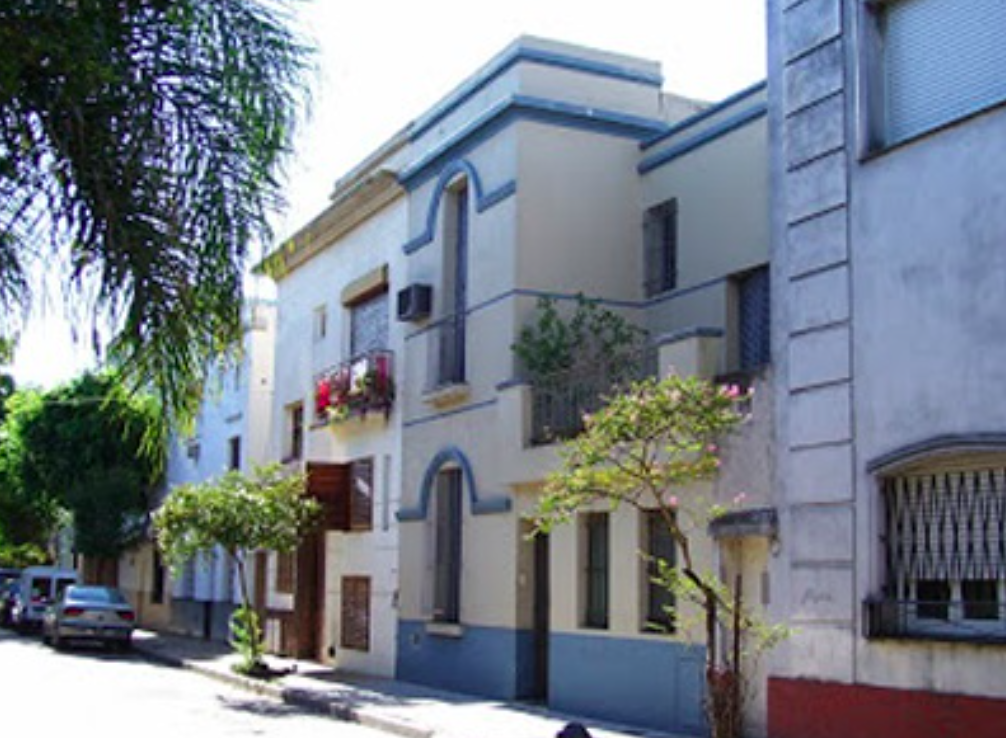RIO DE JANEIRO, BRAZIL – The housing shortage in Argentina is not a problem of this era. Millions of people today have great problems to have access to decent housing, but 100 years ago something similar happened, when cities did not have the current dimensions and the State had to appear to provide a roof over their heads. Thus, different slums arose in the city of Buenos Aires, each with its own particularities, which are still alive and function as bubbles within a larger neighborhood.
Las Mil Casitas de Liniers emerged in this way. It was built near the General Paz, when the avenue that separates the province from the city had not even been planned. Blocks cut in the shape of a rectangle, crossed by passages and streets with names of literary works, flowers and other references of the Argentine cultural heritage, are the main characteristics of this redoubt that was finished in 1928 so that the youngest could have access to a house. Teachers and artists were the first inhabitants, although some time later railroad families joined them.
Read also: Check out our coverage on Argentina
From the Plaza Sarmiento, one of the neighborhood’s green spaces, the small streets unfold and another distinctive feature can be observed: the houses are built on plots of the same size, 8.66 meters by 8.66 meters, following a model from Holland (today the Netherlands) developed by the Compañía de Casas Barata, and manufactured in Argentina by the Comisión de Casas Baratas.

The original plan arose in the 1920s from an idea of Juan Félix Caferatta, a congressman for the province of Córdoba, who proposed the creation of neighborhoods to alleviate housing problems. A municipal ordinance of 1922, under the administration of Carlos Martín Noel, authorized construction on land belonging to the Fürst family. A total of 1760 houses were built.
“The size of the plots was chosen to produce as many houses as possible. In that size, according to the Dutch plan, a comfortable life could be developed. All the houses had a bathroom, a great advance for the time, gas (although the first houses were with a wood stove, called economical), a kitchen, a room downstairs, another on the mezzanine and two more rooms on the second floor, with a patio in the back and another in the front,” describes Nelly Pareja, president of the Board of Historical Studies of Liniers.
The neighborhood developed in two stages or groups: Ramón Falcón, bounded by Timoteo Gordillo, Ventura Bosch, Carhué and Falcón streets, with an east-west orientation; and Tellier, in the polygon formed by Lisandro de la Torre, Boquerón, Montiel and a sector up to José León Suárez and another one from Gordillo to Tellier (as Lisandro de la Torre was formerly called), with a north-south orientation.
Mburucuyá, Bermejo, La Madreselva, El Trébol, El Carpintero, El Zorzal, El Cardenal, Tuyutí are some of the names of the streets and passages that surround the Mil Casitas, a peaceful and cozy bubble where neighbors can spend long hours chatting on the corners and the sound of some birds wins the battle against the noise of vehicles and buses.
Each house today reflects the imprint of its owners and although most of them are in good condition, some of them show the passage of time and lack of maintenance. Originally, they all had the same characteristics. The design of the neighborhood – five similar ones were made in the city of Buenos Aires – was inspired by European models of the early 20th century with a strong influence of modern rationalism.
“The very pure volumetry and expression made the Legislature propose to introduce Italianate ornamentation to the facades in some and Dutch in others, as they are visualized today in some cases. Those noble houses were very well illuminated and were built with good materials and their dimensions and proportions were worthy of respect”, is described in the publication Liniers, mil historias (Liniers, a thousand stories).
The growth of Liniers is closely linked to the railroad. In 1904, the repair shops of the Ferrocarril del Oeste were moved from Tolosa (department of La Plata) to Villa Liniers and, with that, hundreds of workers moved. In that context, the fever of lots, subdivisions and constructions began, especially on the south side of Rivadavia Avenue. The railroad workers were granted loans to build their houses and also arrived at the Mil Casitas.
“There is a theory that the name comes from La Plata, from a neighborhood that was called the same way because part of the neighborhood had the railroad population, people who lived in Tolosa and moved here. First it was intended for young people and teachers, but later the railroad workers joined in. People were desperate to live here because the monthly fee was very low. There were raffles and adjudications with a notary public,” says Pareja.
The coin-operated gas meter was another of the great advances of the neighborhood that was also populated by artists and intellectuals, who in other areas of Liniers were called the Fifi because “they did not have much money in their pockets, but many books in their heads”. Still today, among the inhabitants, there are many writers, plastic artists, sculptors and neighbors linked to art and culture.
The houses have remained in the families through the generations, although many were rented or sold because of their great commercial potential. Hundreds of stories take place among the passages of the Mil Casitas, such as the neighborhood meetings during the holidays when the tables are moved to the sidewalk, the street is cut off and the community celebrates. A bubble that grew in the 20s of the last century and lasts until today.

